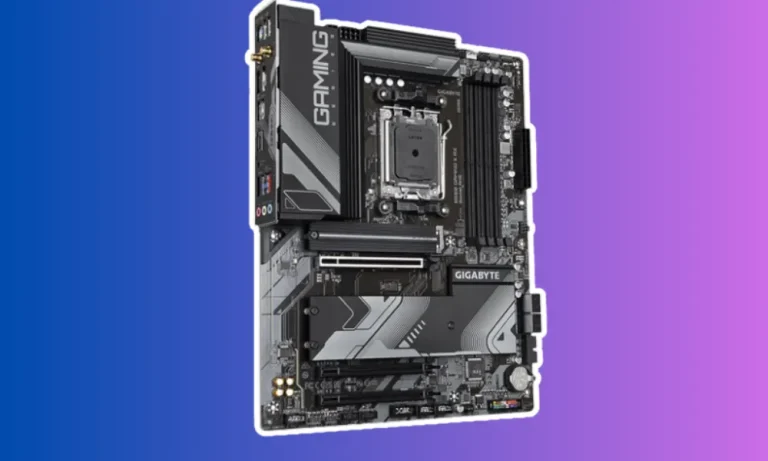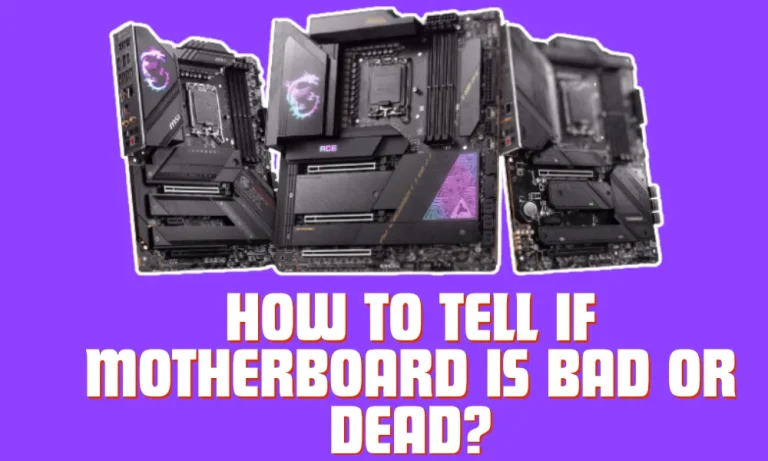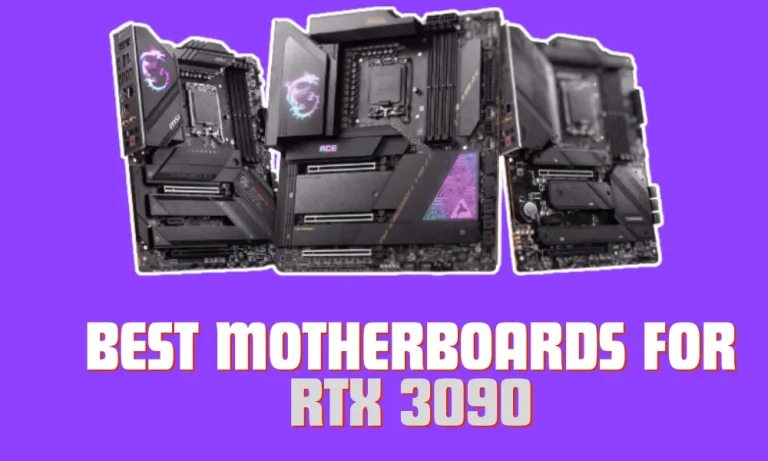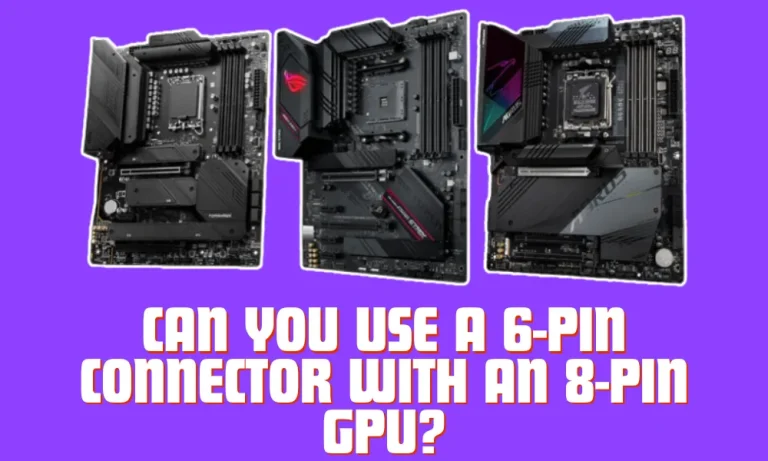How to Overclock Your CPU?
Are you looking to turbocharge your computer’s performance without breaking the bank? Look no further! In this beginner-friendly guide, we’ll walk you through the exciting world of CPU overclocking.
Discover how to unlock hidden potential, boost speeds, and maximize efficiency, all while keeping things cool and safe.
Understanding the Basics of CPU Overclocking
Have you ever wondered how CPUs work and what determines their operating frequency? Understanding these concepts is crucial when it comes to overclocking your CPU.
How CPUs Work and Their Operating Frequency
At the heart of your computer, the CPU (Central Processing Unit) is responsible for executing instructions and performing calculations. It acts as the brain of your system, handling tasks ranging from simple arithmetic to complex computations.
The operating frequency, measured in gigahertz (GHz), determines how many instructions the CPU can process per second.
Factors that Affect CPU Performance and Potential for Overclocking
Numerous factors influence CPU performance and overclocking potential. Here are a few key considerations:
- Thermal Design Power (TDP): TDP represents the maximum amount of heat generated by the CPU under normal operating conditions. CPUs with higher TDP values generally have more headroom for overclocking.
- Cooling Solutions: Efficient cooling is essential to prevent overheating during overclocking. Upgrading your cooling system, such as using a high-performance CPU cooler or liquid cooling, can enhance your overclocking capabilities.
- Motherboard Support: Not all motherboards are designed to handle overclocking. Ensure that your motherboard supports overclocking features and has a robust power delivery system to sustain the increased demands.
- CPU Architecture: Different CPU architectures have varying overclocking capabilities. Research your specific CPU model to understand its potential for overclocking.
Preparing for CPU Overclocking
Before diving into the exciting world of CPU overclocking, it’s essential to make the necessary preparations. This section will guide you through the steps to ensure a smooth and successful overclocking experience. Let’s get started!
Checking CPU Compatibility and Limitations
Not all CPUs are created equal when it comes to overclocking. It’s crucial to check if your CPU is unlocked and supports overclocking.
Locked CPUs have restricted settings and may not offer the flexibility needed for overclocking. Additionally, be aware of the limitations set by the manufacturer to avoid pushing your CPU beyond its safe operating limits.
Understanding the Cooling Requirements for Overclocking
Overclocking generates more heat, which can potentially damage your CPU if not properly managed. Adequate cooling is vital to maintain stable and safe operation.
Consider upgrading your cooling system, such as investing in a high-quality CPU cooler or liquid cooling solution. This will help dissipate the heat generated during overclocking and keep your CPU temperatures within acceptable limits.
Gathering Necessary Tools and Software
To overclock your CPU successfully, you’ll need the right tools and software. Before starting, ensure you have the following:
- BIOS Access: Overclocking is typically done through the system’s BIOS (Basic Input/Output System). Familiarize yourself with accessing and navigating your computer’s BIOS settings.
- Monitoring Software: Install reliable monitoring software to keep an eye on crucial parameters like CPU temperature, voltage, and stability during overclocking. Popular options include HWMonitor, Core Temp, and MSI Afterburner.
- Stress-Testing Tools: Stress testing is essential to verify the stability of your overclocked CPU. Programs like Prime95, AIDA64, and Intel Burn Test can help you stress test your CPU and identify any stability issues.
Step-by-Step Guide to Overclocking Your CPU
Are you ready to unleash the full potential of your CPU? In this section, we’ll walk you through a step-by-step guide to overclocking your CPU. Buckle up and get ready for an exhilarating ride!
BIOS Setup
The first step in overclocking your CPU is accessing the BIOS (Basic Input/Output System), where you can adjust various settings.
To access the BIOS, restart your computer and press the designated key (often Del or F2) during the boot process. Once in the BIOS, navigate to the CPU settings section.
Adjusting CPU Settings
In the CPU settings section, you’ll find options to modify the clock multiplier, base clock, and voltage settings.
Begin by increasing the clock multiplier, which directly affects the CPU frequency. Make incremental adjustments, such as increasing it by 0.5 or 1, and save the changes.
Saving and Exiting the BIOS
After adjusting the CPU settings, save the changes and exit the BIOS. Your computer will restart with the new settings applied.
It’s important to note that not all adjustments may result in stable overclocks. If your system fails to boot or crashes, return to the BIOS and revert to the previous settings.
Stress Testing and Monitoring
To ensure the stability of your overclocked CPU, stress testing is crucial. Use reliable stress-testing tools like Prime95 or AIDA64 to put your CPU under heavy load and monitor its temperature and stability.
If any instability or excessive temperatures are observed, adjust your settings accordingly.
Incremental Overclocking
Overclocking is a gradual process. Increase the CPU clock speed in small increments, and stress test your system after each adjustment to verify stability.
This iterative approach helps you find the optimal balance between performance and stability.
Fine-Tuning and Optimization
Once you’ve achieved a stable overclock, consider fine-tuning other settings. Adjust the CPU voltage to ensure stability at higher frequencies.
Additionally, optimize other system components such as memory timings and graphics card settings to maximize overall performance.
Troubleshooting and Common Issues
As exciting as CPU overclocking can be, it’s not without its challenges. I’ll explore some common issues that you may encounter during the overclocking process and provide guidance on how to troubleshoot and resolve them. Let’s dive in!
Identifying and Resolving Common Overclocking Problems
Overclocking can sometimes lead to stability issues, such as system crashes, blue screens, or unexpected reboots. If you experience any of these problems, it’s essential to identify the cause.
Start by reverting to the last stable settings in the BIOS. If the issues persist, consider the following troubleshooting steps:
- Temperature Check: Excessive heat can cause instability. Ensure that your CPU cooling solution is adequate, and consider improving airflow in your system.
- Power Supply: Inadequate power supply can also lead to instability. Ensure that your power supply unit (PSU) can handle the increased power demands of your overclocked CPU.
- Memory Compatibility: Overclocking can sometimes affect memory stability. Try adjusting memory timings or voltages to improve stability.
Understanding the Risks and Limitations of Overclocking
While overclocking can provide performance gains, it’s crucial to understand the risks involved.
Overclocking can potentially void your CPU warranty and may increase power consumption and heat generation. Pushing your CPU beyond its limits can also reduce its lifespan.
It’s important to strike a balance between performance and stability. Not all CPUs are created equal, and some may have lower overclocking potential than others.
Respect the limitations set by the manufacturer and be cautious when pushing your CPU to its maximum capabilities.
Final Thoughts and Precautions
Congratulations on successfully overclocking your CPU! As we wrap up this guide, it’s essential to discuss some final thoughts and precautions to ensure a smooth and safe overclocking experience.
The Importance of Maintaining Proper Cooling and Stability
When overclocking your CPU, it’s crucial to maintain proper cooling to prevent overheating.
Ensure that you have an efficient cooling solution, such as a high-quality CPU cooler and adequate airflow in your system. Proper cooling helps maintain stability and prevents performance degradation or even hardware damage.
The Potential Impact on CPU Lifespan and Warranty
Overclocking pushes your CPU beyond its factory-set specifications, which can potentially impact its lifespan.
The increased voltage and heat generated during overclocking can accelerate wear and tear on the CPU. It’s important to understand that overclocking may void your CPU warranty, so proceed with caution and at your own risk.
The Need for Regular Monitoring and Maintenance
Once you have successfully overclocked your CPU, the journey doesn’t end there. Regular monitoring and maintenance are essential to ensure the continued stability and performance of your overclocked system.
Keep an eye on CPU temperatures, system stability, and performance to identify any potential issues early on.
Regularly clean your computer to prevent dust buildup and ensure optimal cooling efficiency.
Additionally, consider reevaluating your overclocking settings periodically, as system updates or changes in hardware configurations may require adjustments to maintain stability.
Final Words of Advice
Overclocking is an exciting way to squeeze out extra performance from your CPU. However, always remember to prioritize the safety of your hardware and be aware of the potential risks involved.
Proceed with caution, understand the limitations of your CPU, and invest in proper cooling and monitoring to enjoy the benefits of overclocking while minimizing the downsides.
FAQs
Can I overclock any CPU?
Not all CPUs are designed to be overclocked. Only CPUs that have unlocked multipliers or are part of the “K” or “X” series from Intel or the “Black Edition” series from AMD can be overclocked.
Will overclocking my CPU void the warranty?
Yes, overclocking typically voids the warranty provided by the CPU manufacturer. It’s important to understand the risks involved and proceed at your own risk.
How do I know if my CPU is stable after overclocking?
To check for stability, you can run stress tests or benchmarking software. If your system crashes or encounters errors during these tests, it indicates instability, and you might need to adjust your overclocking settings.
What are the risks of overclocking my CPU?
Overclocking can lead to increased power consumption, heat generation, and reduced CPU lifespan. It can also cause system instability, crashes, and potential damage to hardware components if not done properly.
How can I keep my CPU cool while overclocking?
Proper cooling is crucial for overclocking. Ensure you have a high-quality CPU cooler, and proper airflow in your system, and consider using thermal paste between the CPU and cooler for better heat transfer. Regular cleaning of dust and monitoring temperatures is also important.
Conclusion
Overclocking your CPU can be a thrilling way to boost performance, but it comes with risks. By following the steps outlined in this guide, understanding the limitations, and taking necessary precautions, you can safely and effectively overclock your CPU. Unlock the potential of your hardware and enjoy the extra power!






